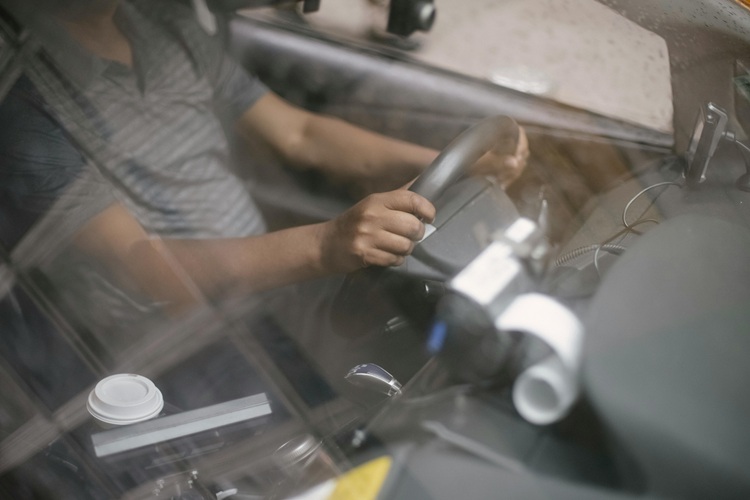
Road rage incidents have become an alarming aspect of modern driving, often leading to dangerous confrontations and even accidents. As traffic congestion increases and stress levels rise, aggressive driving behavior is more common than ever.
Fortunately, technology is playing a growing role in both preventing road rage and providing evidence when it occurs. From advanced driver-assistance systems (ADAS) to dash cams, digital tools are helping drivers stay safer and more accountable on the road.
Understanding how these technologies work can empower drivers to de-escalate tense situations, document critical events, and support law enforcement efforts when necessary.
This article highlights how technological advancements promote safer driving behavior and offer vital evidence when road rage incidents occur.
The Surge of Road Rage and the Need for Solutions
Road rage, aggressive or violent behavior triggered by driving-related or external stressors, is a growing concern on today’s roads. According to the National Safety Council (NSC), it often includes speeding, dangerous maneuvers, and misinterpretations of other drivers’ actions.
While incidents like tailgating, obscene gestures, or being cut off may not always lead to physical harm, they contribute significantly to unsafe environments. Only 1.2% of vehicles in 2023 fatal crashes were linked to road rage, showing how many incidents go unrecorded unless they cause injury.
In more extreme cases, these confrontations escalate into physical assaults outside the vehicle. Traditional enforcement and driver education efforts, though important, are no longer sufficient to address the surge in road rage incidents.
In response, automakers and tech companies are developing tools designed to detect, prevent, and document aggressive driving behavior before it turns dangerous.
Preventing Road Rage Through In-Car Innovations
In-car technology is revolutionizing road rage prevention through AI and biometric monitoring. Systems analyze drivers’ heart rates, facial expressions, and voice stress, detecting early signs of agitation. Upon detection, the vehicle can automatically adjust lighting, temperature, or music to create a calming environment.
Automakers like General Motors have patented systems that monitor driver behavior, such as hard braking or tailgating, using telemetry and biometric sensors. As Motor 1 reports, GM’s anti-road-rage system can even take limited control of the car. It starts with gentle prompts, like suggesting deep breaths to help calm the driver.
If stress indicators persist, the system can escalate to connecting the driver with a trained advisor or directly intervene to prevent dangerous maneuvers.
Autonomous driving systems, like Tesla’s Autopilot, further reduce aggressive acceleration and tailgating. Companies like Smart Eye have also developed advanced driver monitoring systems that track facial movements to detect drowsiness and distraction.
These systems now go further by identifying signs of alcohol impairment and using risk intelligence technology to gauge crash probability. These multifaceted technological advancements are pivotal in building safer roads.
Proving Road Rage with Dashcams and Telematics
Proving road rage incidents is increasingly reliant on technology, especially when tempers flare and accidents occur. Dashcams have become essential tools for capturing real-time footage of reckless or aggressive driving. High-definition video can document erratic lane changes, tailgating, verbal threats, and license plates, providing powerful evidence in insurance claims or court.
Telematics systems also play a vital role by recording data such as speed, braking, and sudden acceleration. These insights are invaluable in identifying dangerous driving behavior and supporting accurate fault determination.
Driver monitoring systems, especially in commercial fleets, further enhance accountability. Using cameras and sensors, they detect fatigue, distraction, or aggression, and can issue real-time alerts before risky behavior escalates.
Additionally, according to CNN, a family used AI to recreate a road rage victim’s voice and likeness for a courtroom impact statement. The AI-generated message allowed the victim to “speak” at the sentencing, giving a voice to someone who could no longer be present.
This powerful use of technology shows how digital tools may not only document road rage but also shape how its aftermath is handled.
When Technology Falls Short
Even with technological safeguards in place, road rage can still lead to serious consequences, including collisions, injuries, and complex legal disputes. When this happens, having a knowledgeable car accident attorney becomes essential.
In a tragic example, a recent road rage crash on I-25 in Colorado Springs left one person dead and seven injured. According to KOAA News, the driver, Durriel Humphrey, is facing multiple charges, including vehicular homicide and assault. These charges stem from his alleged decision to accelerate in retaliation during a tailgating incident.
In such cases, dashcam footage, telematics, and monitoring systems can be pivotal in uncovering the facts. A skilled car accident attorney in Colorado Springs can interpret this data, prove negligence, and navigate the state’s specific liability laws.
According to Springs Law Group, Colorado has unique statutes regarding damages and evidence, which local attorneys understand well. Their expertise ensures victims receive fair compensation and justice in road rage-related incidents.
A Tech-Driven Path Toward Safer Roads
The future of road safety lies in innovation. As ADAS, connected vehicles, and semi-autonomous features grow more common, they promise fewer collisions and calmer, more predictable traffic environments. Connected vehicles, for instance, can share real-time data and traffic infrastructure, helping reduce congestion and eliminate many of the frustrations that trigger road rage.
Additionally, according to the World Economic Forum, satellite technology is shifting the paradigm by enabling real-time, wide-scale oversight. With geospatial imaging and advanced connectivity, risks can be predicted and mitigated before accidents occur.
Efforts like the European Space Agency’s BASS Programme are harnessing AI and satellite data to build smarter traffic monitoring systems. Companies are helping lead this transformation, creating platforms that aim to prevent incidents, not just respond to them.
Also Read: Travel in Style: The World’s Most Instagrammable Cars and Road Trips
Frequently Asked Questions
What is the best way to avoid road rage?
The best way to avoid road rage is to stay calm, avoid reacting to aggressive drivers, and allow extra travel time. Practice deep breathing, listen to soothing music, and maintain safe following distances. Choosing patience over retaliation helps keep everyone on the road safer.
How to use technology wisely when driving?
Use technology wisely while driving by relying on hands-free navigation and voice-activated controls to minimize distractions. Set your GPS and music before starting your trip, and avoid texting or using apps on the road. Driver-assist features and dashcams can enhance safety when used appropriately and without taking your attention away.
When should someone involved in a road rage accident seek legal help?
Seek legal help immediately after a road rage accident, especially if there are injuries, property damage, or disputes over fault. An attorney can help preserve evidence, navigate insurance claims, and protect your rights. Early legal guidance ensures you take the right steps for fair compensation and a strong legal case.
Technology is transforming the fight against road rage, offering new ways to predict, prevent, and prove aggressive driving incidents. From AI-powered mood detection to dashcams and telematics, these tools are making roads safer and providing peace of mind for drivers.
The combination of innovation and legal support ensures that those affected by road rage have the resources they need to recover. As technology advances, road rage may become both less frequent and less harmful.








